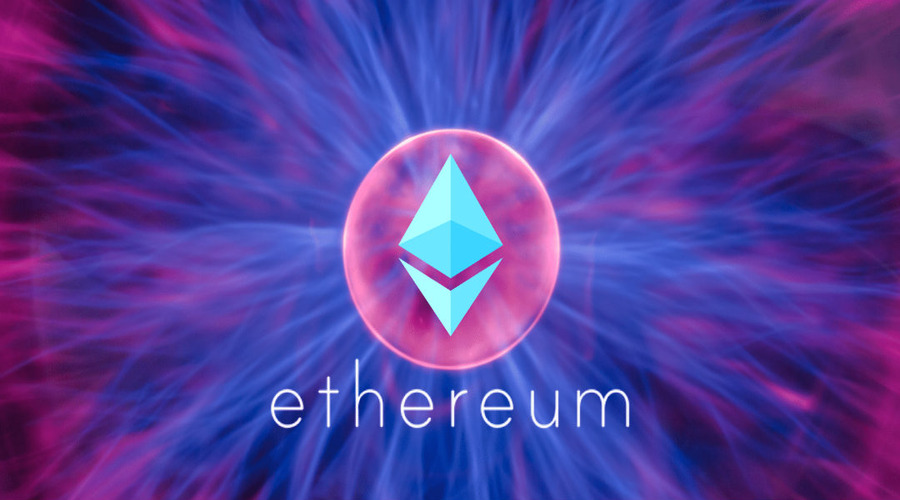In recent years, the blockchain technology has gained significant attention for its potential to revolutionize various industries. Ethereum, in particular, has been at the forefront of this movement, enabling the development of decentralized applications (dApps) and smart contracts. However, as the Ethereum network grows, scalability has become a major challenge. This is where Plasma, a technology designed to provide scalable smart contracts on Ethereum, comes into play.
Introduction
Plasma is a framework that aims to address the scalability issues of the Ethereum blockchain by introducing a hierarchical structure of side chains, also known as “child chains,” which operate in parallel to the main Ethereum chain. These child chains, or Plasma chains, can process a large number of transactions, relieving the burden on the main Ethereum network and significantly increasing scalability.
Smart contracts, on the other hand, are self-executing contracts with predefined rules and conditions. They enable trustless and automated transactions, eliminating the need for intermediaries. However, as the popularity of Ethereum and smart contracts grows, the network’s limitations in terms of scalability have become more apparent.
Scalability is crucial for the widespread adoption of blockchain technology and smart contracts. As the number of users and transactions on the Ethereum network increases, the network’s capacity to handle these transactions becomes strained, leading to congestion and high fees. This is where Plasma offers a potential solution.
Understanding Plasma
What is Plasma?
Plasma is a Layer 2 scaling solution for Ethereum that aims to increase transaction throughput by creating a network of interconnected side chains. These side chains, or Plasma chains, operate alongside the main Ethereum chain and process a subset of transactions independently. By doing so, Plasma enables the network to handle a significantly higher number of transactions per second, making it more scalable.
How Plasma Works
Plasma achieves scalability by implementing a hierarchical structure of side chains. These side chains are connected to the main Ethereum chain through a set of smart contracts, which act as a bridge for transferring assets between the main chain and the Plasma chains. Each Plasma chain is responsible for processing a subset of transactions, allowing for parallel processing and increased throughput.
Plasma also utilizes a mechanism called “fraud proofs” to ensure the security and integrity of transactions. If a malicious actor attempts to manipulate the state of a Plasma chain, any user can submit a fraud proof to the main Ethereum chain, triggering a challenge and potential punishment for the malicious party. This design ensures that the Plasma chains remain secure and resistant to attacks.
Benefits of Plasma
Plasma offers several benefits that make it an attractive solution for scaling smart contracts on Ethereum. Firstly, it significantly increases transaction throughput, allowing the network to handle a higher volume of transactions per second. This scalability is crucial for applications that require fast and efficient transaction processing, such as decentralized exchanges and gaming platforms.
Additionally, Plasma reduces the burden on the main Ethereum chain, resulting in lower transaction fees and faster confirmation times. This makes the Ethereum network more accessible to users and developers, enabling a wider range of applications and use cases.

Scalable Smart Contracts on Ethereum
Challenges with Smart Contracts on Ethereum
While Ethereum has been a pioneer in enabling the development of smart contracts, it faces challenges when it comes to scalability. The current design of Ethereum limits the number of transactions the network can process per second, leading to congestion and higher fees during periods of high demand. This poses a significant barrier for mainstream adoption and hampers the growth of decentralized applications.
Plasma as a Solution for Scalability
Plasma addresses the scalability challenges of smart contracts on Ethereum by offloading a significant portion of the transaction processing to independent Plasma chains. By doing so, Plasma enables parallel processing and increased transaction throughput, making Ethereum more scalable and efficient.
Plasma achieves this scalability by leveraging the security guarantees provided by the main Ethereum chain while allowing for faster and cheaper transactions on the Plasma chains. This combination of security and scalability makes Plasma an ideal solution for applications that require both trustlessness and high-performance.
Features and Advantages of Plasma
Plasma offers several features and advantages that make it a compelling solution for scalable smart contracts on Ethereum. Firstly, Plasma provides fast and inexpensive transactions, enabling a seamless user experience. Users can interact with decentralized applications without experiencing delays or high fees, making blockchain technology more accessible to a wider audience.
Plasma also supports a wide range of token standards, including ERC-20 and ERC-721, making it compatible with existing Ethereum smart contracts. This compatibility ensures that developers can easily migrate their applications to Plasma without major modifications, reducing the barrier to entry for adopting this scaling solution.
Moreover, Plasma’s hierarchical structure allows for the creation of custom Plasma chains tailored to specific use cases. This flexibility enables developers to design Plasma chains optimized for different types of applications, such as decentralized exchanges, gaming platforms, or supply chain management systems.
Implementation of Plasma
To implement Plasma, various approaches have been developed, each with its own set of features and trade-offs. The following are some of the commonly used implementations of Plasma:
- Plasma Chains
Plasma Chains are independent side chains that operate alongside the main Ethereum chain. They process a subset of transactions and provide scalability by enabling parallel processing. Plasma Chains offer fast and inexpensive transactions while leveraging the security guarantees of the main Ethereum chain.
- Plasma Cash
Plasma Cash is a specific implementation of Plasma that focuses on improving the efficiency and scalability of non-fungible tokens (NFTs). In Plasma Cash, each token is represented by a unique identifier, allowing for efficient transfer and ownership verification. This design significantly reduces the computational overhead associated with processing NFT transactions.
- Plasma Debit
Plasma Debit introduces a payment channel mechanism to Plasma, allowing users to conduct off-chain transactions without the need for on-chain verification. This reduces transaction costs and improves transaction speed, making it suitable for applications that require microtransactions or real-time interactions.
Use Cases of Plasma
Plasma’s scalability and compatibility with existing Ethereum smart contracts make it suitable for a wide range of applications. Some of the notable use cases of Plasma include:
- Decentralized Exchanges
Decentralized exchanges (DEXs) facilitate peer-to-peer trading of digital assets without relying on intermediaries. By leveraging Plasma, DEXs can significantly improve transaction throughput and reduce fees, providing a seamless trading experience for users. Plasma’s scalability ensures that DEXs can handle a large number of concurrent transactions, making them a viable alternative to traditional centralized exchanges.
- Gaming and Non-Fungible Tokens (NFTs)
The gaming industry has embraced blockchain technology, particularly in the realm of non-fungible tokens (NFTs). NFTs represent unique digital assets, such as in-game items or collectibles, that can be bought, sold, and traded on the blockchain. Plasma’s scalability and compatibility with NFT standards make it an ideal solution for gaming platforms, enabling fast and secure transactions for in-game assets.
- Supply Chain Management
Blockchain technology has the potential to revolutionize supply chain management by providing transparency, traceability, and immutability. Plasma can play a crucial role in scaling supply chain applications on Ethereum, enabling real-time tracking of goods, verification of authenticity, and efficient management of supply chain transactions.
Future Potential and Development
Plasma is an evolving technology with ongoing research and development aimed at further improving scalability and expanding its use cases. Some of the areas of focus for future development include:
Plasma and Layer 2 Solutions
Plasma is just one of the many Layer 2 scaling solutions being developed for Ethereum. Layer 2 solutions aim to improve scalability by moving a significant portion of the transaction processing off-chain while leveraging the security guarantees of the main Ethereum chain. The integration of Plasma with other Layer 2 solutions can further enhance the scalability and performance of the Ethereum network.
Research and Improvements
Continuous research and development efforts are being undertaken to optimize Plasma’s design and address any existing limitations. These efforts focus on enhancing the security, efficiency, and usability of Plasma, ensuring that it remains a viable and robust solution for scalable smart contracts on Ethereum.
Adoption and Integration
The adoption and integration of Plasma within the Ethereum ecosystem are crucial for its success. As developers and users recognize the benefits of Plasma, we can expect increased adoption and the integration of Plasma into existing dApps and platforms. This will further fuel the growth of scalable applications on Ethereum.
Conclusion
Plasma provides a promising solution for the scalability challenges faced by smart contracts on Ethereum. By introducing a hierarchical structure of side chains, Plasma enables parallel processing and significantly increases transaction throughput. It offers fast and inexpensive transactions, making blockchain technology more accessible to users and developers.
With its compatibility with existing Ethereum smart contracts and support for a wide range of applications, Plasma has the potential to revolutionize industries such as decentralized exchanges, gaming, and supply chain management. Ongoing research and development efforts aim to enhance Plasma’s scalability, security, and usability, further expanding its potential use cases.
Plasma’s integration with other Layer 2 solutions and its adoption within the Ethereum ecosystem will play a crucial role in shaping the future of scalable smart contracts on Ethereum.
FAQs
- What is the difference between Plasma and Ethereum? Plasma is a Layer 2 scaling solution for Ethereum that provides scalability for smart contracts. Ethereum, on the other hand, is the underlying blockchain platform that supports the execution of smart contracts and decentralized applications.
- Are Plasma smart contracts secure? Plasma utilizes a mechanism called fraud proofs to ensure the security and integrity of transactions. While no system is completely immune to attacks, Plasma’s design and the security guarantees of the main Ethereum chain provide a robust security framework.
- How can Plasma benefit the gaming industry? Plasma’s scalability and compatibility with non-fungible tokens (NFTs) make it an ideal solution for gaming platforms. It enables fast and secure transactions for in-game assets, enhances the gaming experience, and opens up new possibilities for decentralized gaming applications.
- Can Plasma be used for cross-chain interoperability? Plasma is primarily designed as a Layer 2 scaling solution for Ethereum. However, it can potentially be extended to support cross-chain interoperability, allowing assets and data to move between different blockchain networks.
- Is Plasma compatible with existing Ethereum smart contracts? Yes, Plasma is compatible with existing Ethereum smart contracts. Developers can easily migrate their applications to Plasma without major modifications, making it a convenient scaling solution for existing Ethereum-based projects.



